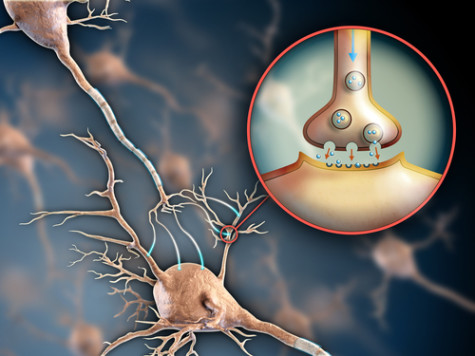 I’ve been spending a lot of time lately thinking about my bloodlines. Perhaps it’s my impending fatherhood, perhaps I’m just at that age. I’ve been tracing my grandfathers’ heritages back through the Revolutionary War and to the Tudor conquest of Ireland. I’ve planned a trip to Norway, which is my grandmother’s homeland, and hope to visit a lighthouse that was once manned by my great great grandfather.
I’ve been spending a lot of time lately thinking about my bloodlines. Perhaps it’s my impending fatherhood, perhaps I’m just at that age. I’ve been tracing my grandfathers’ heritages back through the Revolutionary War and to the Tudor conquest of Ireland. I’ve planned a trip to Norway, which is my grandmother’s homeland, and hope to visit a lighthouse that was once manned by my great great grandfather.
And I had my genome sequenced by 23&Me. I didn’t do it for my family heritage or to find out how much Neanderthal DNA I have (a disappointing 2.7 percent, given the size of my brow and forehead). I wanted to know something deeper. I wanted to understand why I am how I am. I wanted to get the genetics of my personality.
The fields of behavioral and psychiatric genetics – which try to parse out how our genes affect what we do and think – is still new and still has a few kinks to sort out. There’s so much we don’t know but there are a few things about the genetics of our minds that we do know. We know there are certain drugs in your brain that seem important for your mood. And over time, prolonged moods kind of become who you are.
 Things like testosterone play a role in aggressiveness and drive, serotonin is linked to happiness (or not, I can’t really tell anymore), dopamine handles reward and on and on. Reading through handy tools like Snpedia that help you decipher your DNA makes one think that we humans are pretty easy to understand.
Things like testosterone play a role in aggressiveness and drive, serotonin is linked to happiness (or not, I can’t really tell anymore), dopamine handles reward and on and on. Reading through handy tools like Snpedia that help you decipher your DNA makes one think that we humans are pretty easy to understand.
We’re essentially squishy machines with lots of chemical gears and brain switches that scientists are diligently cataloging and sifting through to understand how we tick. Turn the beta-endorphin knob down, we get bummed out. Turn the cortisol up and we get nervous. Turn on the serotonin and we might have a religious experience.
Lately my favorite behavior gene has been COMT (or catechol-O-methyltransferase, as it’s called for short). COMT codes for a special enzyme that, among other things, neutralizes dopamine. Dopamine is a hugely important brain drug that, among other things, affects our mood, broadly speaking. And COMT is its garbage man, sweeping up the extra unused brain dopamine you have lying around.
Amazingly, the work ethic of a COMT enzyme seems to boil down to a single base pair – just one rung of the DNA ladder – that codes for a tiny yet crucial part of its structure. If that one spot uses a chemical called valine, then the enzyme is a decent, tax-paying, hard-working enzyme, sucking up as much dopamine as it can. Probably raised Protestant, a valine-laced COMT enzyme clocks in eager to clean dopamine and, as a result, the brain has a lot less of the drug lying around.
 But if a different ingredient, called methionine, is in that crucial spot then the enzyme becomes a wastrel, sitting about on plastic lawn chairs all day, drinking Miller Lite and complaining about its ex-wife. Work piles up and the brain accumulates a bunch of extra dopamine.
But if a different ingredient, called methionine, is in that crucial spot then the enzyme becomes a wastrel, sitting about on plastic lawn chairs all day, drinking Miller Lite and complaining about its ex-wife. Work piles up and the brain accumulates a bunch of extra dopamine.
So what’s the difference between a brain with extra dopamine and one with just enough? It turns out, quite a bit. There are about 400,000 dopaminergic neurons in the brain, many in important regions of the pre-frontal cortex where a lot of complex thought happens. And when dopamine is allowed to wander about willy nilly, people act differently.
People with valine enzymes (often called val/vals) tend to be less effusive about the things they see (“That pie had too much salt and not enough blueberry”). They have a high pain tolerance and a low response to placebos. Meanwhile, people with methionine (often called met/mets) are more effusive (“Oh my god, that was the most amazing pie ever”), have a low pain threshold and respond well to placebos. I myself am a val/met, which means I’m in the middle and can only imagine what it’s like to be an extreme.
If you take all the papers that have been written about COMT genotype, you get a picture that is at the same time vague and oddly specific. Kind of like your average Zodiac sign, palm reading or tarot card.
 Over time I’ve developed a mental image of these different genotypes. I imagine the met/mets as these bubbly, always happy Pollyannas who dance with penguins and leave a trail of sparkles behind them. Meanwhile, val/vals in my mind get jobs in finance and complain about the traffic.
Over time I’ve developed a mental image of these different genotypes. I imagine the met/mets as these bubbly, always happy Pollyannas who dance with penguins and leave a trail of sparkles behind them. Meanwhile, val/vals in my mind get jobs in finance and complain about the traffic.
I believe quirky romantic comedies require at least one met/met (I’m looking at you, Meg Ryan) and one val/val (c’mon Harrison Ford, why so gloomy?). I imagined that met/mets give better Christmas presents than val/vals and are certainly better in bed. Val/vals in my world are the level-headed people you want in your corner during a crisis.
If you think this is all too neat and clean, you’re probably right. The research into COMT is still developing and is based on observations of lots of people. And it’s only one rung of one DNA strand on one chromosome. It’s also meant to be painted across populations, not pigeonholed to individuals. When I recently asked a few friends to share their 23&Me results, not a single one of them matched my preconceived notions or thought the descriptions fit them.
 But that’s not how I want it work. While I don’t like the idea of boiling human emotions down to a couple squishy turning gears, I do like how tidy it is. I want to be able to look up my genome and make broad generalizations about myself. I want to have a genetic tarot card that I can inspect and say “ohhh, that’s why I always forget people’s names” or “that’s why I got in that fight in the third grade.” Most of all, I want to understand right now what kind of man my son will be.
But that’s not how I want it work. While I don’t like the idea of boiling human emotions down to a couple squishy turning gears, I do like how tidy it is. I want to be able to look up my genome and make broad generalizations about myself. I want to have a genetic tarot card that I can inspect and say “ohhh, that’s why I always forget people’s names” or “that’s why I got in that fight in the third grade.” Most of all, I want to understand right now what kind of man my son will be.
But that’s not what nature gave us. Nature has given us messy, confusing and vastly complicated brains that contradict themselves and resist every attempt to classify them. Brain chemicals that mix with genes and experience and environment, run through a blender and pour out as the muddled Slurpee that is human behavior. Nature gave us the opportunity to shape our own brains.
Which is exactly what I would say, given that I have a thymine at position 43731789 on my X chromosome.
Photo Credit: Shutterstock
Genetics and “functional medicine” testing are complementary, and we can’t get a good picture of dopamine without both together. A person can be COMT met/met (homozygous variant genetic result) , which keeps dopamine in the system 3-4x longer than val/val (wildtype genetic result), and yet have high, medium, or low levels of dopamine. We need to determine or get a good estimate of how much dopamine the person has with an organic acids test or urine dopamine test (reference ranges will be somewhat too wide), High dopamine with COMT met/met could result in schizophrenia. Low dopamine really needs the COMT met/met to keep what little dopamine they have in the system longer, and they can tolerate only 1/4 of the dose of substances that augment dopamine or norepinephrine. Low dopamine with COMT val/val clears what little dopamine the person has quickly, but because they clear it quickly they can take normal-higher doses of substances that augment dopamine or norepinephrine.